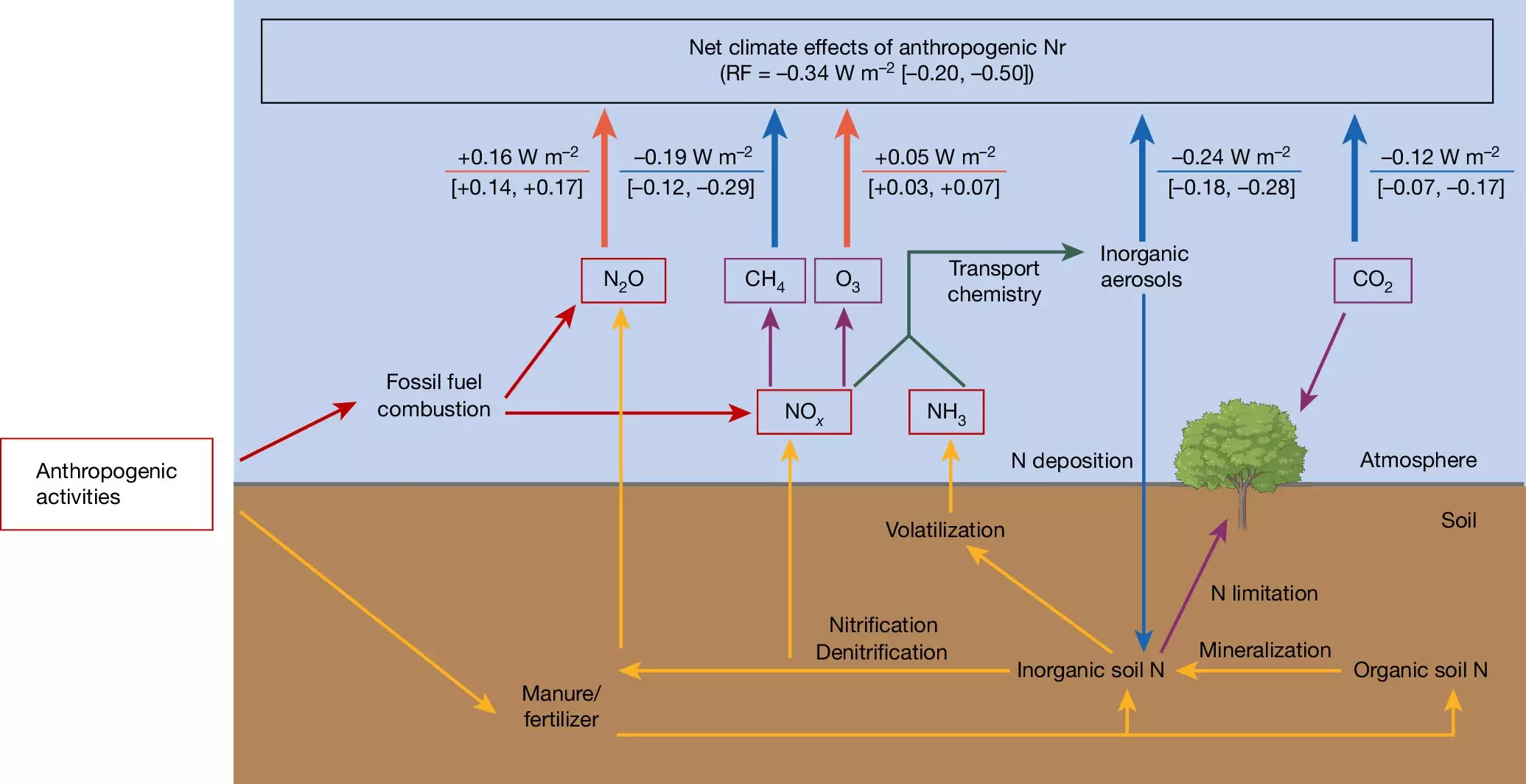Nitrogen is a crucial element in many biological processes, yet its dual role in climate dynamics presents a convoluted challenge for environmental science. While nitrogen compounds, primarily derived from agricultural activities and fossil fuel combustion, are notorious for their environmental detriment—polluting air and water, fostering detrimental over-fertilization of ecosystems, and threatening biodiversity—an intriguing aspect of these compounds emerges when viewed through the lens of climate effects. Recent findings indicate that human-induced nitrogen sources may actually yield a net cooling effect on our planet. This insight complicates the narrative around nitrogen emissions, leading to critical considerations about how we approach environmental policy and agricultural practices.
Humans have exponentially enhanced the presence of reactive nitrogen in the atmosphere, which, unlike inert atmospheric nitrogen gas, actively alters climate patterns. Reactive nitrogen compounds, like nitrous oxide emitted from nitrogen-rich soils and nitrogen oxides from gasoline and diesel combustion, present a mixed bag of effects. The former is a powerful greenhouse gas, while the latter contributes to the formation of fine particulate matter that reflects sunlight and cools the atmosphere, demonstrating that the nitrogen saga is far from a straightforward case.
A Comprehensive Analysis Unveils Contradictions
An investigative study led by scientists from the Max Planck Institute for Biogeochemistry sheds light on the diverse climate impacts of nitrogen. By synthesizing data on nitrogen emissions via advanced modeling techniques, researchers have drawn compelling conclusions about how these emissions can result in both warming and cooling effects. They discovered that on average, anthropogenic nitrogen inputs contribute a net negative radiative forcing—this means that nitrogen emissions cool the atmosphere, which is quantified at around -0.34 watts per square meter compared to a significant warming force of 2.7 watts per square meter from greenhouse gases like CO2.
This revelation elicits a transformative perspective on nitrogen management. Instead of dismissing nitrogen emissions outright as harmful pollutants, we must understand the intricate dance of environmental factors involved in their impact on climate. Elements like soil enrichment, improved plant growth, and subsequent CO2 absorption also stem from nitrogen’s influence. These insights underscore the complexity of climate interactions, urging a multifaceted approach to agriculture and energy usage.
Implications for Environmental Policy
While the potential for nitrogen emissions to present a cooling effect is noteworthy, it does not absolve them of their notorious reputation as environmental foes. The nuances of this relationship reveal a double-edged sword: while nitrous oxide continues to heat the climate, the overall effect of nitrogen inputs leads to cooler temperatures when considering all factors. Policymakers must navigate these intricate relationships carefully. There is a dire need for more responsible nitrogen management strategies that mitigate the harmful impacts of nitrogen while not neglecting its climate benefits.
Experts advise against leveraging the cooling properties of nitrogen as a rationale for increasing its emissions. This mindset risks oversimplifying a complex issue and could lead to further environmental degradation. Emphasizing the multifarious consequences of nitrogen use not only mandates the reduction of greenhouse gas emissions but also insists upon a reevaluation of agricultural practices to optimize nitrogen efficiency. Better methodologies, such as precision farming, could minimize nitrous oxide emissions while sustaining agricultural productivity.
Future Directions in Nitrogen Research
The ongoing discourse surrounding nitrogen emissions invites a deeper exploration of its multifaceted effects. Future research endeavors must be designed to unravel the complex interconnections between biogeochemical processes, atmospheric chemistry, and climate dynamics. The differentiation of local versus global impacts must also be underscored in studying nitrogen’s role, as many of the observed effects can vary significantly across different geographies and ecosystems.
Moreover, the findings from contemporary research urge academic and practical realms interconnected with climate science, agronomy, and public health to cooperate more closely. Addressing the harmful impacts of nitrogen requires a harmonized strategy that sees beyond the conventional view of nitrogen as merely an agricultural input. Innovations in technology must be scaled to enrich both agricultural practices and ecological health simultaneously.
As we forge ahead, we must be vigilant in recognizing that while nitrogen might carry the potential for various forms of climate regulation, tapping into this potential must never come at the expense of our health, biodiversity, or the ozone layer. Enlightenment on these issues can only come through rigorous research and a commitment to sustainable practices that respect nature’s balance while fostering human welfare.

